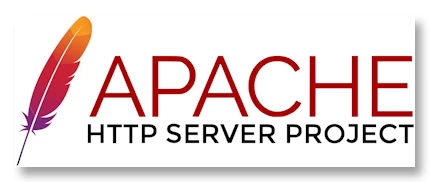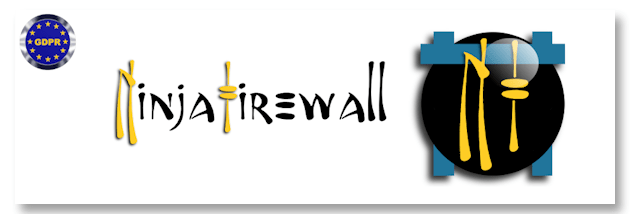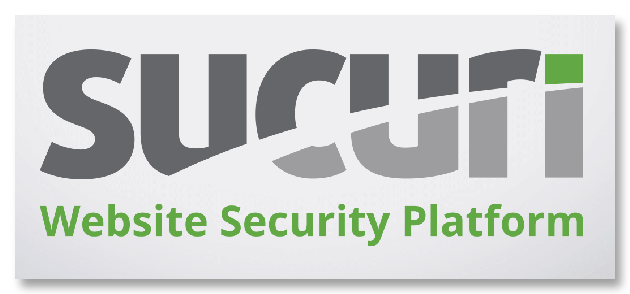So you’re wondering if you really need a WordPress firewall. Let’s start off with some interesting WordPress facts.
WordPress is the most popular CMS on the planet. According to recent data from W3Techs, it’s used by 43% of all websites—not just websites that use a CMS.
Based on those statistics, it shouldn’t surprise anyone that hackers have WordPress in their sights. Hackers hack for a variety of reasons. Some for revenge, but mostly for the challenge or some kind of financial gain. So that beautiful website that you’ve spent hours—and possibly a lot of money—creating and maintaining is like sugar to an ant. They just can’t stay away.
With that in mind, it’s time for you to add another layer of security and protection to your site with a WordPress firewall. The following will help you understand how they work and give you further insight into why they’re necessary and the benefits they offer you. Additionally, you’ll find information on the best WordPress firewall options in 2022 and how to add one to your site.
TABLE OF CONTENTS
1. What is a WordPress Firewall?
2. Types of Firewalls
3. How a WordPress Firewall Works
4. Why You Need a WordPress Firewall
5. Best WordPress Firewall Plugins in 2022
NinjaFirewall (WP Edition)
Sucuri
All in One Security & Firewall
6. Conclusion
1. What is a WordPress Firewall?

Source: Pixabay
A WordPress firewall—or any type of firewall that sits between your local network and the internet—is the outward layer of security that monitors and, if necessary, blocks incoming or outgoing network traffic. Essentially, they are your first layer of defense.
Packets of data constantly flow back and forth from your home, work, or school networks. From your desktop and mobile devices. Understandably, most people have personal information and data stored that they don’t want floating around on the World Wide Web. Schools and businesses have even more information stored and all the more reason to protect it.
Adding a WordPress firewall to your sites helps you keep your personal and business data safe, but it also protects you from malicious packets of data infiltrating your networks.
2. Types of Firewalls

Image Source: Flickr
There are several different types of firewalls, but here are 5 common ones.
- Apache firewall
- DNS (Domain Name System) firewall
- NAT (Network Address Translation) firewall
- Packet-filtering firewalls
- WAF (Web Application Firewall)
That last one, the Web Application Firewall, is the typical WordPress firewall.
Apache Firewall

As of September 2022, W3Techs reports that 31.2% of all websites using a known web server, use Apache, a free, open-source web server. It has a security module called mod_security that acts as a firewall against threats.
DNS (Domain Name System) Firewall
This type of firewall protects you during the DNS resolving process—this is what’s going on in the background when you try to access a website/domain. A series of queries are processed and analyzed, looking for security risks. Based on the query results, requests are either blocked or redirected.
NAT (Network Address Translation) Firewall
This type of firewall operates at the router to protect private networks. The only way traffic can pass through is if a device on the network requested it. And it will protect your local IP address from being visible on the internet.
Packet-Filtering Firewalls
Remember, packets of data move back and forth across your local network and the internet. And the packet-filtering firewall is the first iteration of the firewall—and it’s the most basic.
This firewall checks traffic at the router or switch, inspecting—but not opening—the packets. It will check origin and destination IP addresses, the port number being used, the packet type, and more.
If a packet doesn’t meet a list of user-generated criteria, it doesn’t get forwarded.
The problem with this type of firewall is its very simplicity. While they don’t use many resources, they are fairly easy to bypass.
WAF (Web Application Firewall)
Again, this type of firewall is most typically used as a WordPress firewall.
They work by monitoring, filtering, and blocking data packets that move between computers and websites or web applications. They can be host-based, cloud-based, or network based. In terms of your WordPress site, they are an essential layer of security.
3. How a WordPress Firewall Works
Now that you know what type of firewall WordPress uses, let’s dig a little deeper into how they work.
The WAF (Web Application Firewall) monitors and filters HTTP traffic between the internet and a web application. Note that WordPress isn’t a web application in and of itself, but it can be used as a web app framework.
WAFs defend against application layer 7 protocols. Layer 7 includes, but is not limited to, the following.
- DHCP
- DNS
- HTTP
- HTTPS
- POP3, SMTP
- FTP
- SSH
Layer 7 only represents a small slice of the huge list of Open Systems Interconnection model (OSI) that represents the flow of data in a communication system. This means a firewall can only protect users from specific types of attacks. And this is why you must never expect that a firewall is all you need to keep your WordPress site safe. As stated a few times in this article, a firewall is only a single part of a larger suite of tools used to secure a website. It works as a sort of reverse-proxy—different from a proxy server which provides an additional type of protection.
The WordPress firewall uses a set of rules known as policies. The goal of each policy is to filter out malicious traffic by protecting against any vulnerabilities—vulnerabilities that may exist in the core files or anything else a user adds to their site—themes, plugins, and so on.
WAFs operate using two different methods. A blocklist and an allowlist. As the name suggests, a blocklist uses a negative security model, meaning it stops bad traffic at the door. But an allowlist—a positive security model—does the opposite. It allows friendly, pre-approved traffic. Unfortunately, neither model is perfect, so many WordPress WAFs will use a hybrid model that allows a user to implement both.
Most WordPress WAFs are cloud-based. This security works as a perimeter and blocks malicious traffic before it hits your network.
4. Why You Need a WordPress Firewall

Source: Pixabay
As mentioned above, WordPress is incredibly popular—so that means it’s popular with hackers as well. Adding a WordPress firewall to your site helps you defend against a variety of attacks. Security threats include:
- Attacks against vulnerable plugins, themes, and WP core files
- Brute force attacks
- Cross-site scripting
- Cross-site forgery
- Distributed denial-of-service (DDoS) attacks
- File inclusions
- Malware
Man-in-the-middle threats - SQL injection attacks
Of course, some of these issues are somewhat controlled by keeping up to date with simple WordPress management like keeping your themes and plugins updated—and your core files too.
But that’s just the beginning.
When it comes to keeping your business, your website, and your visitors safe, there’s a lot to stand guard against. Any one of the above could take your website offline. Think of the damage that could do if you run an ecommerce shop. Or if sensitive data was manipulated or stolen. A WordPress firewall is a type of insurance against that ever happening.
An added benefit is the peace of mind you could bring to your users, knowing you’ve done your part to make your WordPress site as secure as possible—by adding as many layers of security as possible.
Just a side note. As stated above, a WordPress firewall is just a layer of protection, the first line of defense against attacks. To fully secure your WP site, you need to add your firewall to a full-fledged security plugin.
So now that you know you need one, what are your best options for a WordPress firewall?
5. Best WordPress Firewall Plugins in 2022
When it comes to choosing a WordPress firewall, you have several options. And you’ll need to make some decisions if you’ve already got a security plugin—because if it doesn’t have a firewall included you either want to start with a new, better security plugin or just add a standalone firewall.
Here are your options.
NinjaFirewall (WP Edition)

Price: $69
Standalone Firewall
NinjaFirewall is a WordPress plugin that works a bit differently from your standard plugin since it sits in front of WordPress—it loads before WP to create the firewall.
According to their site, this firewall has three parts that work as depicted in the following image.

Source: NinTechNet
NinjaFirewall #1 is the Web Application Firewall itself that loads before WordPress does. Requests are either accepted or rejected before they even reach your site.
NinjaFirewall #2 works at the WordPress level. It’s function is to let you know when someone logs into the admin dashboard and/or detects a hacker trying to get administrator privileges.
NinjaFirewall #3 is when PHP gives control back to NinjaFirewall and it performs a check on your HTTP headers and cookies, modifying and securing them.
Features:
- Installs like a plugin but loads before WordPress
- NinjaFirewall #1 blocks hacking attempts before they reach the site
- Multisite compatible
- DDoS protection
- Real-time detection
- Fast and efficient brute force attack protection
- Powerful filtering engine
- File integrity monitoring
Cons
It’s not free, but it is cheaper than the next option. But it should be noted that the next open has more features.
Sucuri Web Application Firewall (WAF)

Price: Basic $9.99/month & Pro $19.98/month
Standalone Firewall
Sucuri’s firewall is cloud-based—it blocks hacks and attacks before they even reach your web host. Starting with the Basic edition, it protects against the following.
Features:
- Prevents layer 3, 4, and 7 DDoS attacks and offers virtual patching to protect outdated software.
- Auto enabled SSL
- DDoS mitigation using Anycast network
- Enhanced CDN speed
- Load balancing
The Pro version adds preloaded SSL support for your existing SSL.
Along with the above, you’ll get general features such as:
- Whitelisting
- Geoblocking
- Traffic logs
- Custom block page
Cons
Sucuri is expensive, but it can be argued that it’s worth the price. You just need to decide if you really need all the protection it offers.
Additionally, the installation and configuration may be daunting for beginners.
All In One WP Security & Firewall

Price: Free
Combined Firewall & Security Suite
Right out of the box, All in One has a lot going for it. It’s free, it’s a comprehensive package, and it’s user-friendly. If you’re not the technical type that lives and breathes WordPress, this may be the choice for you.
One of my favorite features—which isn’t unique to All in One, by the way—is a Security Strength Meter that gives you a visual of the security conditions of your site.

Your score and the number of points you have will vary depending on what features you have enabled—like the WordPress firewall. In my case, the above screenshot is taken from my test site, so I don’t need to worry about breaking any features. Others may have lower scores because there are features they need to turn on.
Having said that, using the Meter is a great way to find a starting ground for what you need to work on to protect your site.
Here are a few of the most notable features of the plugin.
Features:
- Add Google reCAPTCHA
- Blacklist IPs
- Brute force attack prevention
- Detect duplicate login names
- Firewall
- Scan WordPress for file changes
- Track and block login attempts
Cons
While this plugin does have a lot of the features that you’d find in a premium—there’s a price for it—plugin, they don’t have the same depth.
As an example, the scanner will let you know that someone somewhere somehow has made a change to one of your WordPress files. But that’s the extent of it. You’ll need to find and fix the problem yourself—or pay someone to do it.
6. Wrapping Up
If you weren’t previously convinced that a WordPress firewall is a critical addition to your site, you should be by now. Remember, your security is made up of multiple layers, and your firewall is your first. It’s the bouncer at the door, keeping the undesirables out.
And you have options. You could use a standalone premium firewall or something free. Just remember you always get what you pay for, and that a freebie may end up costing you at some point.
Keeping a WordPress site up to date and safe can take a bit of time, but it’s time well spent. Of course, if you administer multiple sites, that’s more time. In that case, you should consider the advantages of WPBlazer and its WordPress management capabilities.
